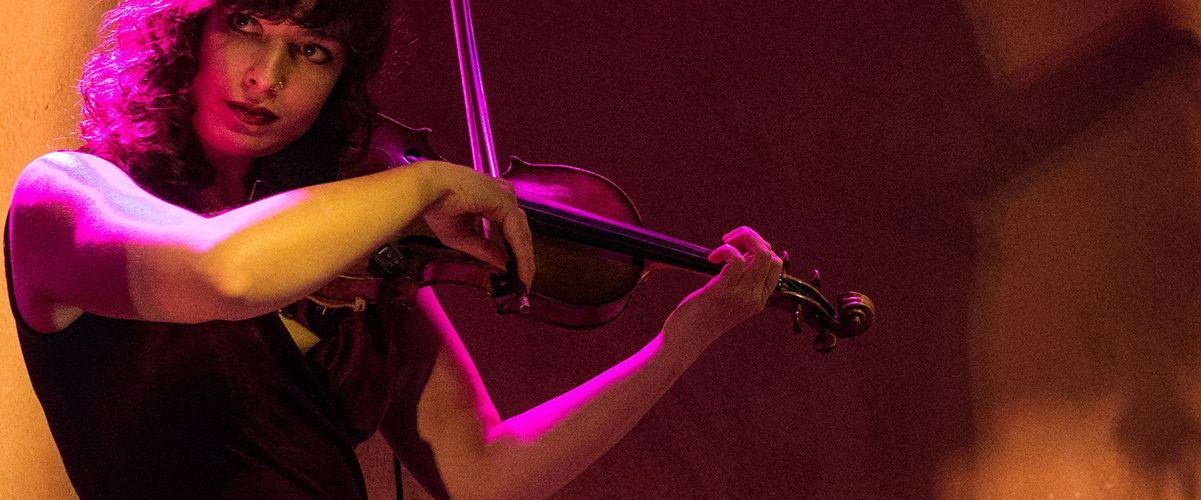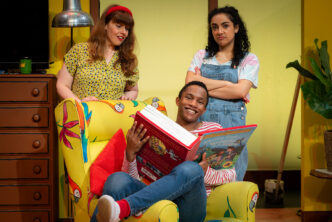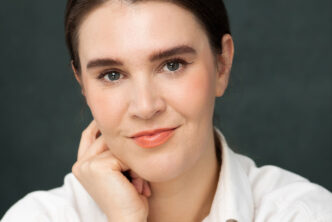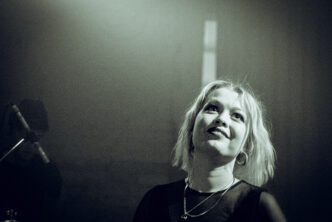What Does the Future Sound Like? is a series of digital films, from Manchester Jewish Museum, celebrating the diversity of Jewish music, with a unique insight into women redefining the UK Jewish music scene today. Carmel Thomason talks to classically trained violinist, Anna Lowenstein, to find out more about the project and the UK’s Klezmer scene.
What Does the Future Sound Like? celebrates the diversity of Jewish music. How does secular music such as Klezmer differ from the traditional music sung at the synagogue?
Anna: “The music sung in synagogues is pretty diverse: differing across denominations and ethnic groups so what you might hear in an Orthodox Sephadi synagogue could be pretty different from a Reformed one for example. However, I haven’t spent enough time in any Shul to feel equipped to answer this question in great detail. In Judaism, the Hazzan (Khazn in Yiddish) leads the congregation in sung prayers. This can be an officially ordained position, requiring as lengthy and as deep a training as to become a Rabbi. As far as I know; purely instrumental music isn’t heard so much in a religious context, although instruments can be present to accompany choirs and singing. Klezmer is broadly speaking an instrumental genre played for celebrations and during lifecycle rituals such as weddings. Klezmer music is often danced to, although not all Klezmer is dance music. There is a crossover between wordless melodies sung by the Hasidim called nigunim which form part of worship. Many of these melodies have made their way into Klezmer repertoire”.
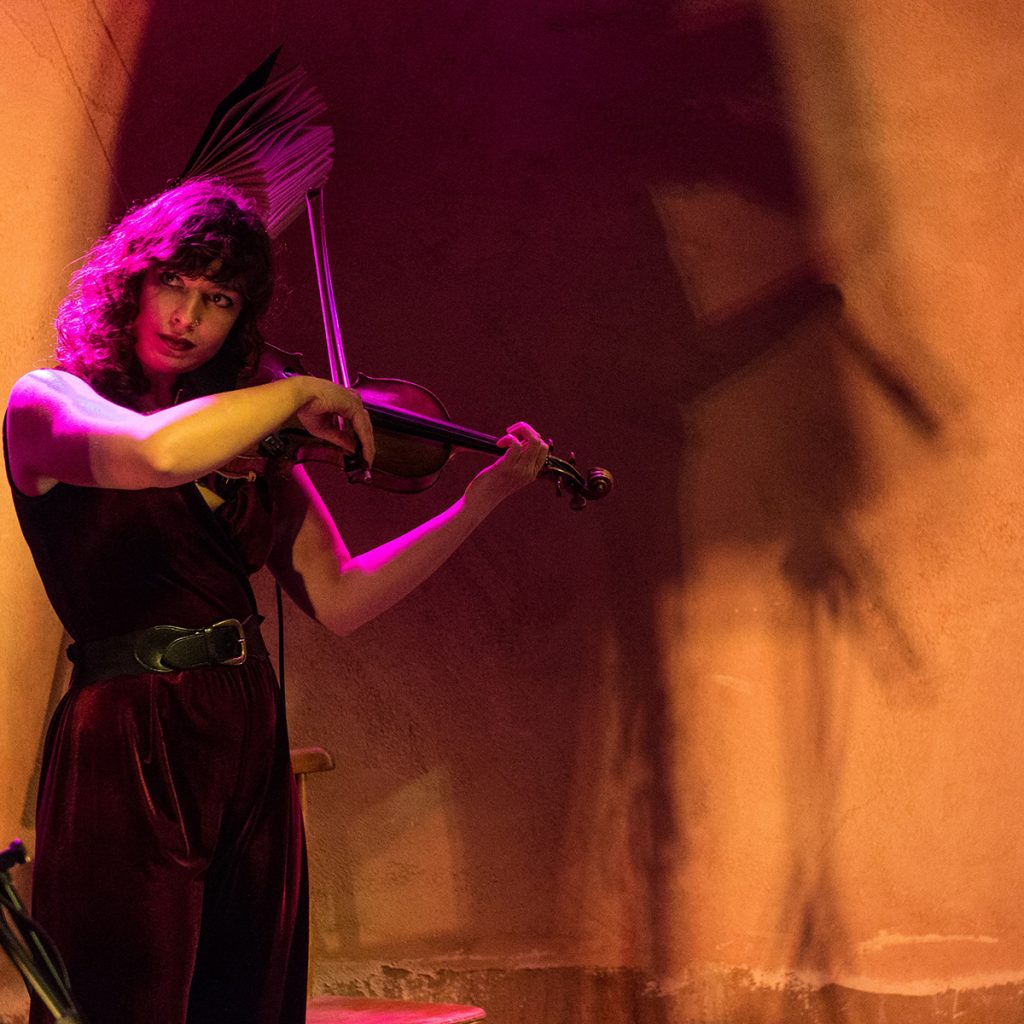
How would you describe Klezmer music for those unfamiliar with the genre?
Anna: “Klezmer music is the traditional, instrumental music of the Ashkenazi (Eastern European) Jews. The word Klezmer (pl. Klezmorim) originally referred to a Jewish musician, rather than the style of music. Like all traditions, it’s a varied, complex and nuanced music, with many sub-categories of dance styles, ritualistic/functional forms and regional variation depending on locality. However, the most ‘recognisable’ sound of Klezmer might be a lively tune in 2/4 or 4/4 time, in what might sound to people like a minor key. However, Klezmer makes use of modes that don’t all fit into ‘Western’ music theory, and the relationship between major and minor modalities isn’t so binary. For me, the beauty of this music is expressed through these modal tensions; simultaneously joyful and mournful, with phrasing and ornamentation that stylistically aims to mimic the expressive quality of singing”.
What is Klezmer fidl style?
Anna: “This is a difficult question to answer in terms of the technicalities, so I’ll answer it in terms of what it is today and the ways in which I engage with it. As this music was, and to a large extent still is, an oral tradition, much of what we know about the way the music sounded when it was still widely played across Eastern Europe comes from old recordings made on wax cylinders. Much of the work I have done to learn about the style is to listen to these recordings, slowing them down and attempting to transcribe and copy the details in how these players phrased and ornamented melodies. However, some fidl players – Alicia Svigals, Deborah Strauss, Michael Alpert to name just a few – have been lucky enough to learn from musicians who still knew the music in its original context. There was a fiddler called, Leon Schwartz who was still alive in 1970s/80s New York. He was originally from Bukovina and taught and recorded his repertoire and style – much of which is still being passed on through teachers today”.
How does the UK Klezmer scene fit into that tradition?
Anna: “The UK Klezmer scene is small but perfectly formed community of players who have dedicated much of their professional lives to the study of this music. All of us have engaged in the process I outlined above: working with and learning from archival material, as well as travelling internationally to learn and perform with great Klezmer musicians and scholars around the world including Yiddish Summer Weimar, KlezKanada and Yiddish New York. However, I think the UK Klezmer scene has marked itself out to be a really forward thinking and progressive one. The London Klezmer Quartet have written lots of their own repertoire which stays true to the tradition whilst being exceptionally fresh and original. String duo, Fran&Flora brought a 21st century sound world to traditional and archival material by incorporating innovative and experimental production techniques into their album Unfurl. In my own work, I have begun an experimental duo project with Klezmer drummer Simon Roth to explore the stylistic language of Klezmer through an improvisational lens”.
How does being Jewish influence you as a musician?
Anna: “Whilst I don’t believe that one has to be Jewish in order to play this music and engage with it in deep and meaningful ways, I feel that my Jewish heritage is in part what drew me to it. I was brought up in a secular home in the middle of the Hasidic community of Stamford Hill and so the sounds of Friday night and High Holy Day prayers were in my ears from an early age. Despite the totally secular upbringing, I have always felt culturally connected to Judaism – my dad raised us on a diet of year round matzah snacking and the Marx Brothers. I also experienced a lot of anti-semitism at school which I think in many ways shaped my identity and brought me closer to my Jewishness. When I started playing this music in my late teens, something clicked. I felt I was able to express myself in ways that came much easier to me than the classical music I grew up playing. It just felt right somehow; like I had been wearing the wrong sized shoes up until that point”.
How did studying at Manchester University influence your career?
Anna: “The two biggest influences on my career so far were my studies in ethnomusicology, anthropology, and participatory music in theory and practice. The ethnomusicology course taught me to think critically not just about music, but about wider social and cultural issues. In particular, it taught me to see the ways in which certain narratives dominate and shape our perceptions and world view. The Participatory Music module solidified my early ambitions of wanting to use music in ways beyond performance that would positively impact society. I have worked and volunteered in a wide range of settings, from concerts in care homes for the elderly to workshops with residents in Immigration Removal Centres. The majority of my work currently comes through Newham Music Service working with children and young people with Special Educational Needs. At the moment I’m also part way through the application process to train as a Music Therapist at The Guildhall School of Music and Drama”.
Recorded as part of the Global Klezmer Fiddler Lockdown project
Can you tell us a bit about Songs from the Stamford Hill Shtetl?
Anna: “This is a project I started writing in 2017/18 while living above a shop on a parade of ultra-orthodox and Hasidic owned business in Stamford Hill. I plan to write a Klezmer tune for each of the shops that I formed a relationship with and present it as both an interactive website with a combination of illustration, music and words as well as a live performance that will combine storytelling and music. I’m interested in the various tensions that are at play within this project. I am composing and playing Jewish music about a community for whom I am prohibited to play for or with because of my gender. It’s also interesting to think about the ways in which different communities relate to this particular form of Jewish music”.
How has the pandemic impacted your work?
Anna: “Before the pandemic I was in rehearsal for and due to start a run of show called Indecent at the Menier Chocolate Factory. The show’s music written and devised by Klezmer fiddle player Lisa Gutkin and it was an amazing piece of theatre by playwright Paula Vogel about a Yiddish play and its unfortunate history. The production is currently on hold, as are most of my other performing projects: I have’t had a gig since May when I played for my parents and their neighbours on their street. The only work I have now is in schools but even that is pretty limited. Many schools either cancelled their provision or severely restricted it due to the bubble systems. Its hard but there have been silver linings: in particular I’ve been developing my compositional voice over this time, becoming more familiar and fluent with music production on Ableton Live and creating some new and interesting sounds. I’ve also had time to play lots of Bach: seeing as it was written to be played solo, its the perfect soundtrack to a pandemic. Not sure whether my housemates would agree, but it’s keeping me sane and stimulated at least”.
How did you get involved with the film project with the Manchester Jewish Museum?
Anna: “Through my dear friend and unofficial mentor, Francesca Ter-Berg – the cellist and multidisciplinary artist who makes up one part of the duo I mentioned earlier, Fran&Flora”.
What will you discuss in your film?
Anna: “Some pretty similar things to here but in more or less detail. Insights into the ways in which artists think and feel out their craft – a bit like going backstage at a show maybe?”
What do you hope people will take from the film?
Anna: “Hope and excitement for the future: not just for the UK’s Jewish music scene, but the return of live music and performance in general. We all need it”.
What Does the Future Sound Like? is one of a series of events from Manchester Jewish Museum ahead of its re-opening in Spring 2021 following a £5 million restoration. The films are available to watch online from 10-15 December 2020. See website for details.

